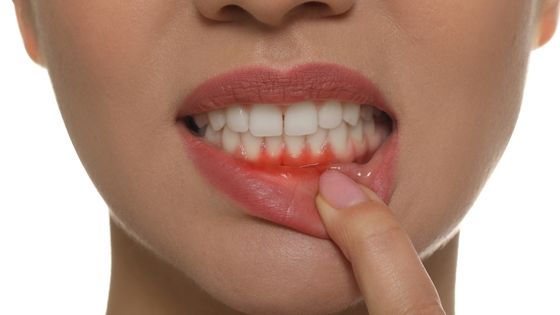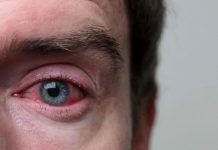The outermost shell of human teeth is made of enamel, a considerably hard substance. In fact, tooth enamel is more rigid than steel. Yet, an injury to the tooth or cavities may cause pus to develop in the tooth or its surrounding structures. So, what is abscess formation in the tooth, and what should you know about it? Let’s discuss this.
What is an abscessed tooth?
An abscessed tooth is a bacterial infection causing the formation of pockets of pus in different parts of a tooth. It’s also called a dental abscess. A pus-filled tooth causes moderate to severe pain that may spread to your ear or neck.

An abscessed tooth can become a severe and life-threatening condition when left untreated. Continue reading to learn more about the different types of dental abscesses and how to recognize them.
What Are The Types Of Dental Abscesses?
Depending on the dental site or location, the three most common types of dental abscesses are:
- Gingival abscess, which affects the gums.
- Periapical abscess, which appears at the root of a tooth.
- Periodontal abscess, which affects the gum adjacent to a tooth root, might also involve the surrounding tooth structures.
What Are The Symptoms Of Tooth Abscess?
Tooth abscess generally manifests as pulpiness and intense pain in your gums or near a tooth. Once it starts, the pain worsens over time. The following are other indications and symptoms:
- Spreading discomfort to your ear, jaw, or neck
- Pain when chewing or biting
- Pain that receives worse as you take a nap
- Facial swelling and redness
- Tooth Sensitivity
- Swollen, red gums
- Bad breath
- Foul taste in your mouth
- Discolored or loose teeth
- Swollen, sore, and tender lymph nodes in the neck or under the jaw
- Fever
Rupturing of the abscessed area leads to immediate pain relief but a bad taste and foul taste in the mouth when the pus gets drained. Swish your mouth with water until the water you spit appears clear, without any blood or pus. Later, you may put crushed ice wrapped in a cloth on the affected area. After that, use mouthwash to clean your mouth.
What causes tooth abscesses?
Pus in the teeth or gums is a result of bacterial infection. However, the reason for bacterial infection differs according to the abscess type.
-
Gingival abscess
It is caused by a foreign object, such as a toothbrush bristle or a popcorn kernel, sets in your gums.
-
Periapical abscess
A cavity causes bacteria to enter the pulp, the soft, inner part of your tooth made up of blood vessels, nerves, and connective tissues.
-
Periodontal abscess
The periodontal abscess is usually an aftermath of periodontitis, a severe gum infection that may cause tooth loss. The pus accumulates in the connective tissue of a wall pocket in this abscess.
What Is The Treatment For Tooth Abscess?
Treatment for tooth abscesses focuses on relieving the infection and alleviating pain. The dentist might start with a dental X-ray depending on your symptoms. It helps them determine the extent of the infection.
Your dentist may suggest one of the following treatment options depending on the type and severity of your abscess.
Abscess drainage
This process involves an incision to drain the pus. Your dentist makes a tiny cut in the affected area to drain the pus. If the abscess is a result of an injury from a foreign object, the dentist removes it and then lets it out. Finally, they use a saline wash to clean the pus and blood and disinfect the area.
A root canal procedure
You can save your tooth with a root canal treatment at La Jolla or any location that suits you. The dentist chooses a root canal when the abscess goes deeper into the teeth. It requires drilling into the pus-filled tooth to clean and remove any infected pulp. Next, the dentist will fill the hollowed area and seal it after the root canal. In this case, you may also need a dental crown to strengthen the affected teeth. You will need to take a separate sitting for the crown procedure.
Tooth extraction
The tooth needs to be removed if the infection and pus have damaged it inside out. The abscess is removed after pulling the tooth out.
Antibiotics
Your dentist might prescribe oral antibiotics to eliminate the infection if it has spread beyond the abscessed area or if you have a compromised immune system.
If you can’t visit a dentist soon, consider taking over-the-counter anti-inflammatory drugs to relieve pain and swelling. Swishing warm salt water in your mouth may also help.
What Are The Side Effects Of Tooth Abscess Treatment?
Even if the abscess has got drained on its own, see a dentist anyway. They can examine and treat the affected area properly to rule the possibility of further infection out. Generally, severe cases of tooth abscess show the following symptoms:
- Facial swelling
- High fever
- Increased heart rate
- Trouble swallowing
- Confusion
Patients with these symptoms, along with tooth abscesses, need immediate treatment. In rare cases, untreated tooth abscesses may become sepsis, a life-threatening condition.
How Long Does Tooth Abscess Take To Heal?
A few days of treatment are enough to get rid of the tooth abscess. However, it also depends on how large is the affected area. Sometimes, abscess drains without any treatment. Nonetheless, it is sensible to see a dentist to ensure that the infection has cleared up and doesn’t spread further.
How To Prevent Tooth Abscess?
Good oral hygiene is non-negotiable for preventing tooth abscesses. Besides, regular dental check-ups and professional dental cleaning also help. If you already have tooth or gum problems, be diligent about following your dentist’s instructions on oral health care.

















